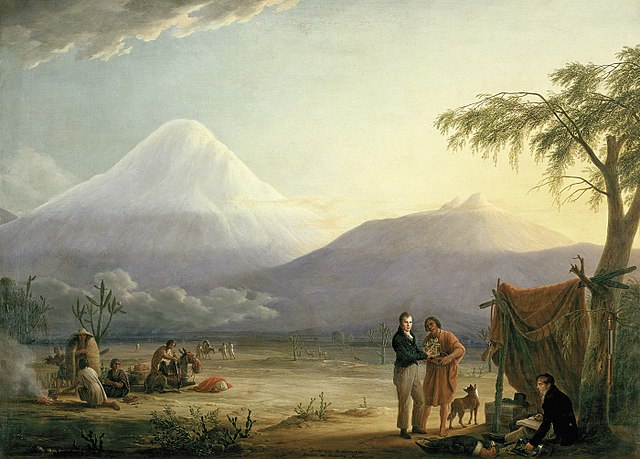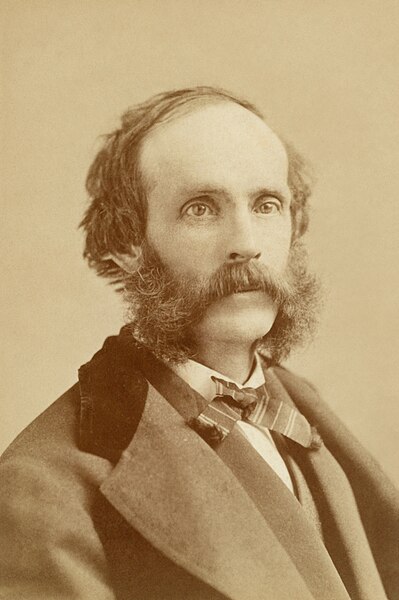The Heart of the Andes is a large oil-on-canvas landscape painting by the American artist Frederic Edwin Church (1826–1900). It depicts an idealized landscape in the South American Andes, where Church traveled on two occasions. Measuring more than five feet high and almost ten feet wide, its New York City exhibition in 1859 was a sensation, establishing Church as the foremost landscape painter in the United States.
The Heart of the Andes
Alexander von Humboldt and Aimé Bonpland at the foot of the Chimborazo (Friedrich Georg Weitsch, 1810)
There is no photographic record of the 1859 exhibition of The Heart of the Andes; its exhibition in 1864 is pictured. The overhanging portraits and handrails were added for its inclusion in the fine art gallery at New York's Metropolitan Sanitary Fair.
The 1862 engraving by Charles Day & Son. 34.4 x 63.2 cm
Frederic Edwin Church was an American landscape painter born in Hartford, Connecticut. He was a central figure in the Hudson River School of American landscape painters, best known for painting large landscapes, often depicting mountains, waterfalls, and sunsets. Church's paintings put an emphasis on realistic detail, dramatic light, and panoramic views. He debuted some of his major works in single-painting exhibitions to a paying and often enthralled audience in New York City. In his prime, he was one of the most famous painters in the United States.
c. 1868 photograph by Napoleon Sarony
The Heart of the Andes (1859)
Cotopaxi (1862)
Tropical Scenery (1873)







